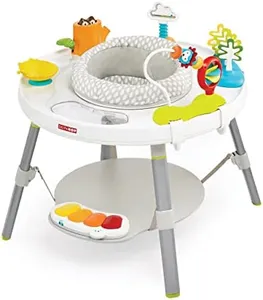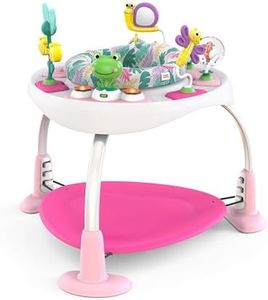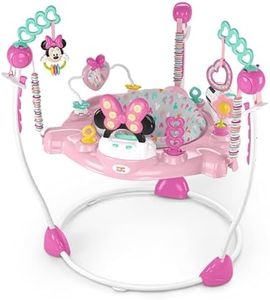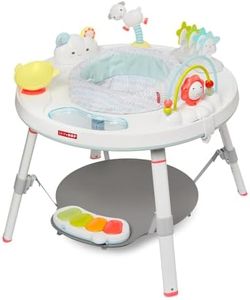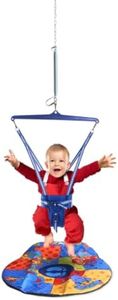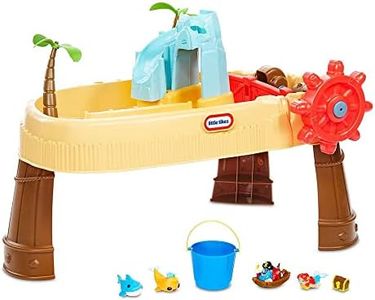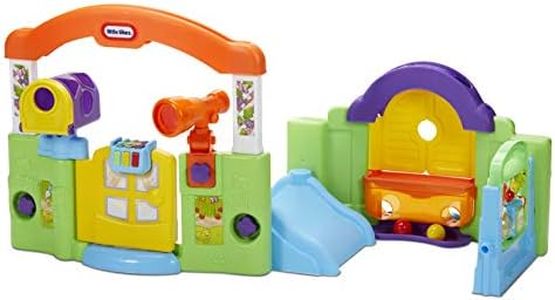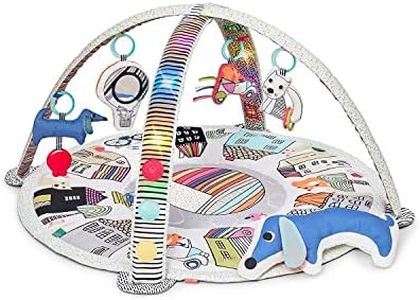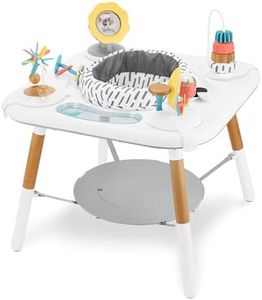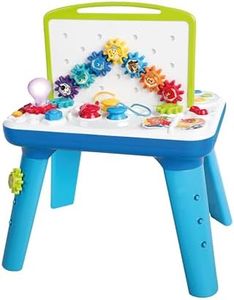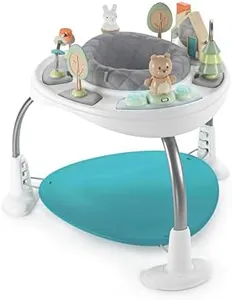We Use CookiesWe use cookies to enhance the security, performance,
functionality and for analytical and promotional activities. By continuing to browse this site you
are agreeing to our privacy policy
10 Best Activity Centers
From leading brands and best sellers available on the web.Buying Guide for the Best Activity Centers
Choosing the right activity center for your child is an exciting process, as these products are designed to help babies and toddlers play, learn, and develop their motor skills safely. When making a decision, you want to look for a center that fits your child's current stage of development and offers features that are both engaging and appropriate for their age. The right activity center should be safe, sturdy, and provide a blend of fun and learning opportunities. Consider how much space you have at home and whether you need something easy to move or store. Most importantly, think about what will keep your child entertained and stimulated, supporting both their curiosity and their growth.Age RangeThe age range tells you for which ages the activity center is suitable and safe. This is important because features that are fun and safe for a toddler could be inappropriate for a younger baby. Activity centers often cater to specific age groups, such as infants (from about 4 months) or mobile toddlers (up to 18 months or more). Always check the manufacturer's recommended age to ensure your child can safely use all activities without risk. Choose according to your child's current age and abilities, and remember that it's better to pick something slightly ahead of their current skill to allow for a bit of growing room.
AdjustabilityAdjustability refers to how the activity center can be changed to fit your child as they grow. This could include adjustable seat heights, removable toys, or the ability to convert from a stationary setup to a walker or a play table. Products with more adjustability last longer as your child grows and their needs change. If you want a product to grow with your child, look for multiple modes or adjustable parts. If your focus is on a specific stage, simpler designs may suit you better.
Safety FeaturesSafety features include wide, stable bases, secure seats, non-toxic materials, and no sharp edges or small parts that could be a choking hazard. Safety is crucial for any baby product and should be checked before anything else. Pay attention to whether the activity center meets recognized safety standards, and whether parts are sturdy and easy to clean. If your child is very active or if you won't always be watching closely, prioritizing robust safety features is essential.
Size and PortabilityThe size determines how much space the activity center will take up in your home, while portability refers to how easy it is to move or store away when not in use. Larger activity centers might offer more features, but they can crowd your living space. Some models fold flat or come apart for easy storage or travel. If you have limited space or plan to take the center to different places, portability is important. If space isn’t an issue, you can focus more on features than size.
Interactive FeaturesInteractive features include toys, music, lights, and textures that keep your baby entertained and encourage sensory and motor development. Some centers are simple with only a few toys, while others offer lots of activities. More isn’t always better; what matters more is whether the options are age-appropriate and if they align with your child’s interests. If your child enjoys music, consider musical features; if they are curious about movement, look for spinning or sliding toys. Choose features that will engage your child but avoid overwhelming them with too many stimuli at once.
Ease of CleaningBabies tend to make messes, so ease of cleaning is important in activity centers. This could mean removable, washable seat covers or surfaces that can be wiped down easily. The easier the center is to clean, the happier you’ll be with it in daily use. If your baby is still drooling or eating messy snacks, prioritize parts that can be washed or cleaned effortlessly.
Stationary vs. MobileSome activity centers are stationary (they stay in one spot), while others can help babies start moving, like bouncers or walkers. Stationary centers are often considered safer for younger babies, as they can't move the product around. Mobile centers are more suitable for children who are starting to walk and need more freedom. Match the type to your child’s skill and mobility level: if they’re just starting to sit or stand, stationary is often best; if they’re ready to explore, a model with movement might be more engaging.

